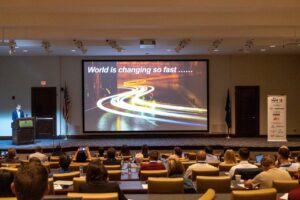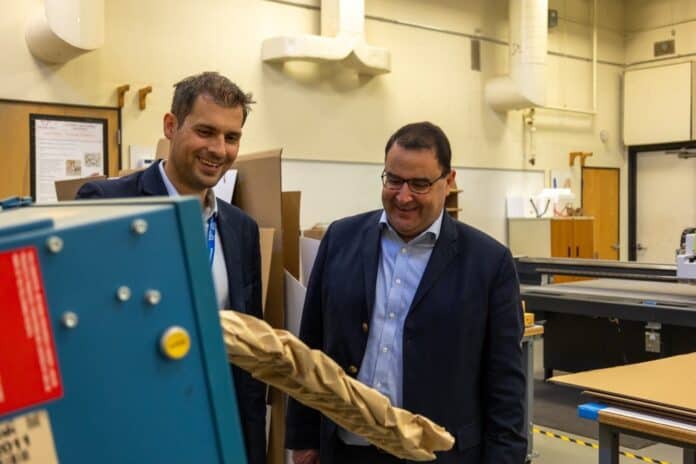Virginia Tech hosted the 32nd Members Conference of the International Association of Packaging Research Institutes, convening leading researchers, industry experts, and students from across the globe in Roanoke, Virginia.
Organized by the Department of Sustainable Biomaterials, the event centered on the theme, “The Future of Packaging is Circular” and advancing research, education, and implementation in fiber-based, sustainable packaging systems.
This was the first time Virginia Tech hosted the conference and the first time the conference was in the United States since 2013.
“This international conference puts our packaging program on the map,” said Laszlo Horvath, director of the Center for Packaging and Unit Load Design. “It’s a rare opportunity for researchers and sponsors to connect, exchange ideas, and shape the future of sustainable packaging.”
Pamplin College of Business alumnus and Ranpak CEO Omar Asali ’92 and gave a keynote address at the conference on the future of artificial intelligence in packaging innovation.
“Over the past few decades, the most significant disruption in packaging was the rise of e-commerce,” Asali said. “It transformed how quickly products needed to be delivered and prompted investment in software, automation, and later robotics. Initially, robotic systems struggled, but recent AI advancements have revolutionized their effectiveness, moving us from paper-based systems to intelligent, image-driven decision-making.
“AI isn’t about replacing people, it’s about enabling better outcomes through smarter systems,” Asali continued. “While some worry AI will displace jobs, I subscribe to the idea of a ‘human in the loop.’ Technological revolutions have historically shifted labor rather than eliminated it. We must adapt, not fear.”

Yunil Hwang, CEO of CJ America, gave the second keynote address and shared how biodegradable plastics, such as PHA, can help industry and the planet.
“If we act collectively, PHA and similar solutions can gradually replace harmful plastics,” Hwang said. “But this requires effort across science, industry, and society. Just as AI challenges us to rethink human roles in the digital age, plastics challenge us to rethink how we treat the material world.”
The conference brought together participants from more than 30 countries to explore strategies for sustainable packaging, supply chain circularity, and smart material design.
Kiara Winans, a collegiate assistant professor in the Department of Sustainable Biomaterials, presented her work on intelligent packaging systems designed to reduce food waste.
“My talk, ‘Circularity in Active and Intelligent Packaging,’ introduced a Bayesian model to quantify how six smart packaging interventions reduce postharvest food loss,” said Winans, who also leads the Sustainable Impact Academy in CNRE. “We applied the model to perishable foods like fruit and meat, translating those reductions into measurable water savings and greenhouse gas emissions.”
For students, the conference offered more than a platform for sharing research. It was a gateway to professional development and global networking. A number of graduate students in the department were able to share their expertise with conference attendees.
“This kind of participation is invaluable,” Horvath said. “Our students received feedback from top experts, met scholars whose work they’ve studied, and practiced presenting their work to an international audience. That kind of exposure is rare—and powerful.”
Four Virginia Tech students and a faculty member presented their work, while others engaged with sessions led by renowned researchers such as Vincent Rouillard of Victoria University in Australia, whose work is regularly featured in department’s curriculum.
“This conference is more than a showcase,” Horvath said. “It’s an invitation to collaborate across disciplines, borders, and sectors for a circular future in packaging.”
By Max Esterhuizen


